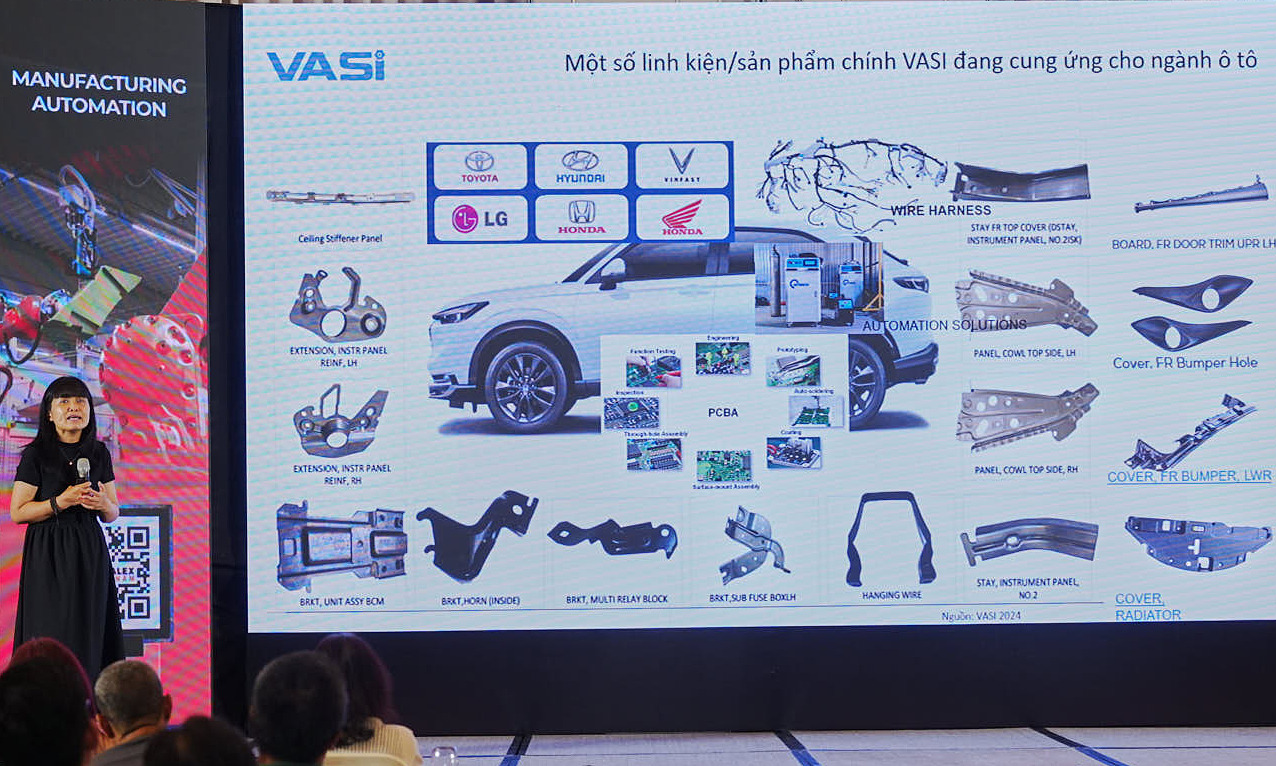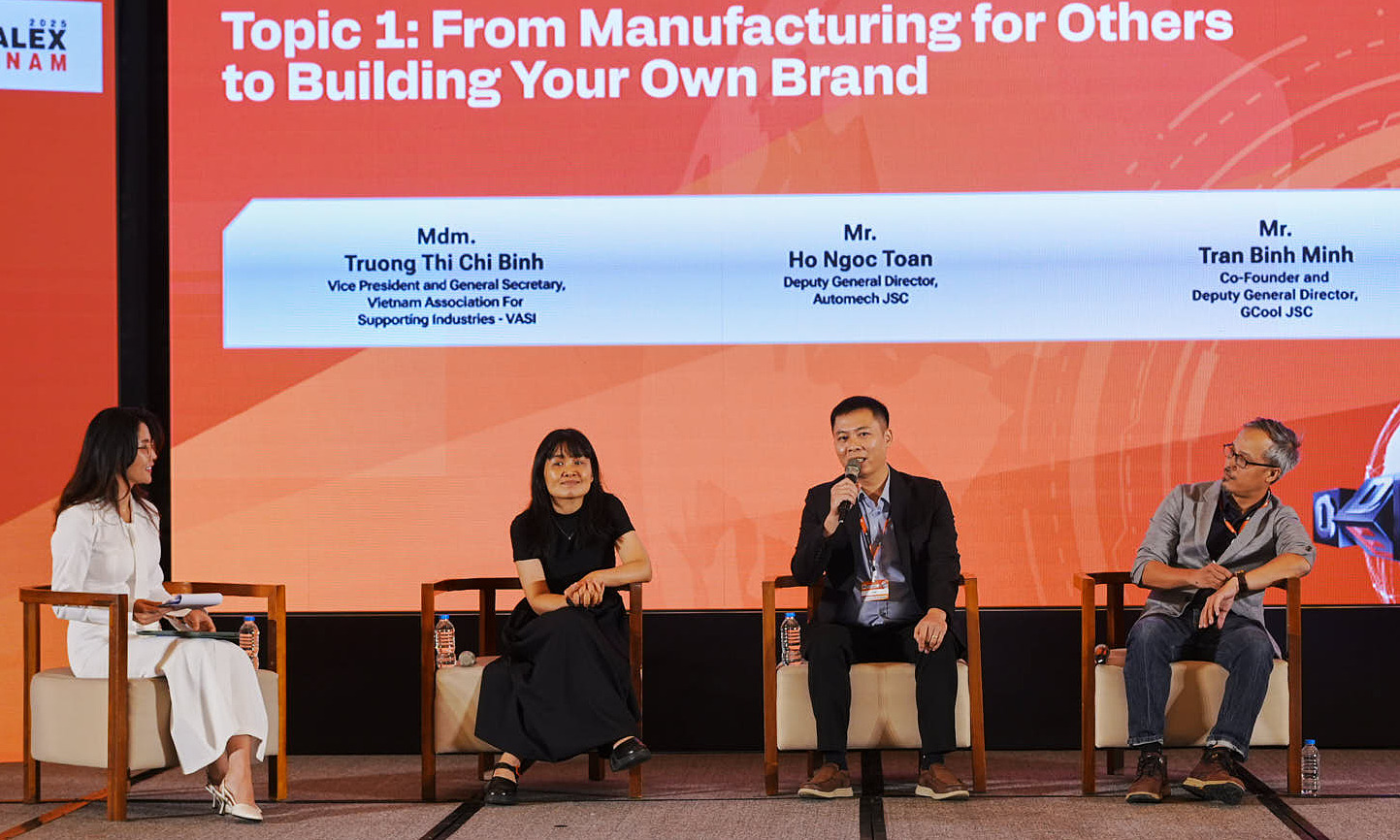This assessment was made by Dr. Truong Thi Chi Binh, Vice President of the Vietnam Association for Supporting Industries (VASI), at the M-TALKS 2025 forum on July 24. The forum's theme was "Breakthrough opportunities in the value chain of Vietnam's mechanical engineering and manufacturing industry in the context of tariffs and global supply chain shifts."
Binh pointed out that Vietnam's manufacturing sector has made progress in recent years. Its value added in GDP has nearly caught up with China's, reaching 26.3% compared to 28.6%, according to 2023 data from the United Nations Industrial Development Organization (UNIDO). However, a long-standing limitation remains the capacity for original equipment manufacturing (OEM), original design manufacturing (ODM), and own brand manufacturing (OBM).
"We often say we are doing OEM, but in reality, most Vietnamese businesses have not yet reached true OEM. The majority stop at individual component processing. A few can produce component clusters, but it is not common," Binh said.
She gave the example of the automotive industry. Many domestic supporting industry businesses supply major car brands, but they only process individual components, not component clusters. Similarly, many electronics businesses struggle to join the supply chains of large corporations.
 |
Dr. Truong Thi Chi Binh gives an example of VASI members' supply capacity for the automotive industry, which mostly consists of individual components and parts. Photo: Metalex Vietnam 2025 |
Dr. Truong Thi Chi Binh gives an example of VASI members' supply capacity for the automotive industry, which mostly consists of individual components and parts. Photo: Metalex Vietnam 2025
As global supply chains, from buyers to FDI manufacturers, are shifting due to tariff fluctuations, the expert believes it is urgent for Vietnam's manufacturing sector to transition to component cluster production and gradually master the OEM process, aiming towards OBM.
This direction will give businesses a stronger voice in the production chain and attract buyers. Binh recounted welcoming a delegation of US businesses in May who were exploring the possibility of shifting 30% of their production to Vietnam if local businesses could meet their supply needs. "This shows that opportunities still exist, but along with that comes great pressure," Binh said.
Experts and businesses in the industry have made several recommendations to accelerate the development of OEM and OBM capabilities. Tran Binh Minh, Co-founder and Deputy General Director of GCool, a company with its own brand and engaged in ODM for ceiling fans, shared his experience in investing in research and development (R&D).
"Currently, we are spending heavily on R&D. For core technologies, we are willing to hire doctors from the US with high salaries," he said. To date, they have developed energy-saving DC motors, registered more than 20 industrial design rights, and provided customized OEM services for clients.
Ho Ngoc Toan, Deputy General Director of Automate, a business that transitioned from trading to manufacturing, believes the most important factors are quality and progress. In addition, manufacturers need to persevere in learning and adapting to customer improvement requests to gradually enhance their capabilities. From having little experience, after being commissioned by customers to produce component clusters, Automate proactively developed product design capabilities, not just for molds but for the entire product cluster.
 |
From right to left: Tran Binh Minh, Ho Ngoc Toan, and Truong Thi Chi Binh (in black) at the M-TALKS 2025 discussion panel on 24/7. Photo: Metalex Vietnam 2025 |
From right to left: Tran Binh Minh, Ho Ngoc Toan, and Truong Thi Chi Binh (in black) at the M-TALKS 2025 discussion panel on 24/7. Photo: Metalex Vietnam 2025
In addition, experts recommend that businesses improve "soft skills" such as sales, customer care, market research, and marketing. Le Nguyen Duy Oanh, Deputy Director of the Vietnam Supporting Industry Development Center, advises businesses to "understand who their customers are." "Suppliers need to proactively understand their core business operations and products," she said.
Tran Quynh Huong, Head of Consulting at Source of Asia Supply Chain and FDI - ESD Director, assessed that Vietnam's manufacturing sector is competing with Malaysia and Thailand in the region. According to her, some Vietnamese businesses have been dropped from the potential purchase lists of foreign customers, not only because of a lack of certifications but also because of their inability to provide detailed quotes, rather than simply offering low prices.
"When suppliers quote prices to FDI businesses, it is important to analyze the price structure, specifically the proportion of labor costs, materials, and whether those materials are dependent on any specific region," she said.
Tran Hong Quan, Commercial Director of RX Tradex Vietnam, the organizer of the Metalex Vietnam 2025 exhibition in October, suggests that businesses proactively connect and learn about partners through trade events. "Typically, successful transactions are often concluded within one to three months after the exhibition, requiring perseverance from businesses," he said.
Looking ahead, the manufacturing sector still holds much promise. According to Dr. Truong Thi Chi Binh, some FDI businesses that had planned to shift part of their production to Mexico after hearing about retaliatory tariffs have recently returned to Vietnam.
"They need a stable supply chain. While US politics can change rapidly, supply chains cannot. In the region, Vietnam remains a stable and highly regarded destination," Binh said. In addition, the government is also working to tightly control product origin, impose anti-dumping tariffs on imported steel, and increase negotiations to purchase more US goods.
According to a survey by the General Statistics Office (Ministry of Finance), the performance of processing and manufacturing businesses in Quarter II was better than in the first three months of the year, with 78.4% of respondents reporting that new orders increased or remained the same. 81.8% forecast that export orders in Quarter III will increase or remain the same compared to Quarter II.
The Foreign Investment Agency (Ministry of Finance) reported that in the first half of 2025, foreign direct investment (FDI) in processing and manufacturing reached nearly 12 billion USD, an increase of 3.9% over the same period. This sector continues to account for the largest proportion of both new projects (38.2%) and capital adjustments (56.5%).
Vien Thong












